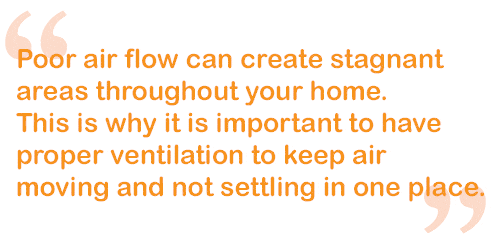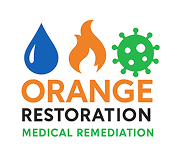The first hot week of the season hits San Diego County, and like clockwork, the air conditioners come on. But instead of a blast of cool, clean air, you’re hit with a musty, moldy smell. Sounds like you have mold in AC or HVAC unit…
If this sounds familiar, you’re not alone.
For many, it’s a sign of microbial growth hiding inside their AC, HVAC, or duct system, and for people with mold sensitivities or chronic illnesses like CIRS (Chronic Inflammatory Response Syndrome), it can be a serious trigger.
According to the producers of the MOLDY Documentary, most Physicians do not understand or have the knowledge to properly diagnose patients with mold sickness: “Possibly every doctor in the United States is treating mold illness, and they just don’t realize it.” –Dr. Scott McMahon, MD
In this blog, we’ll break down why AC systems develop mold, how to prevent it, and what medically sound remediation really looks like when it comes to indoor air quality.
Why Your AC Smells Like Mildew and What To Do About It
That musty odor you notice when first turning on your air conditioning, especially after warmer days begin, is a common issue indicating trapped moisture and potential mold or mildew growth within the system.
Identifying the source of this smell is crucial, and professional help is often recommended.
Common Causes of Mildew Smell or Mold in AC Units:
- Full Drain Pan: Over time, the AC’s drain pan can become clogged with dirt and dust, leading to stagnant water. This standing water creates an ideal environment for mold to flourish. If you observe pooling water or a musty smell, a technician should inspect and clean the system. It is common to have a goo or slime that builds up in a drain pan, this often will clog it. This is called biofilm, a bacterial growth mostly made up of Zooglia bacteria. Dehumidifiers also have this problem, and for CIRS patients or mold sensitive, you need to clean these areas often.
- Frozen Evaporator Coils: When evaporator coils freeze, they can trap moisture and restrict airflow, fostering mold growth. This issue usually signals a larger problem, such as dirty filters or the need for system servicing. A professional can diagnose and repair the underlying cause before mold develops.
- Mold in the Ductwork: Mold can grow inside ducts that remain unused for extended periods, particularly in humid climates. When the AC is activated, these mold spores are circulated into your living spaces. A musty smell from vents or an increase in allergy-like symptoms suggests a duct inspection for HVAC air quality.
- Clogged Condensate Line: The condensate line, responsible for draining away condensation, can become blocked by algae or debris. This blockage causes water to back up into the system, leading to a musty odor. Regular maintenance can prevent these blockages.
- Wrong-Sized AC Unit: An improperly sized AC unit (either too large or too small) may not effectively remove enough humidity from the air. This lingering moisture can contribute to musty smells. An HVAC expert can assess your system’s size and recommend necessary adjustments.
When to Call a Professional for Mold in AC Units:
If you’re noticing a persistent mildew smell or any of the issues mentioned above, it’s a smart move to call in a qualified HVAC professional for a thorough inspection. Odors like this usually mean there’s moisture or microbial growth inside your system and if left unchecked, it can spread quickly, worsen indoor air quality, and even impact your health.
For homeowners with CIRS, mold sensitivities, or respiratory conditions, professional HVAC maintenance isn’t just recommended, it’s essential. Mold spores and biotoxins can circulate through your home via ductwork and vents, triggering symptoms and flare-ups even if mold isn’t visible.
How to Prevent Mold and Biotoxins in HVAC Systems
Regular tasks like cleaning internal components, inspecting coils and drain lines, sealing ductwork, and replacing filters can be overwhelming or ineffective without the right tools and training. In these cases, setting up a recurring maintenance plan with a medically-aware HVAC or remediation team ensures that:
- Your system stays clean and dry year-round
- Filters are changed using medically appropriate standards
- Potential mold-prone areas are proactively treated before problems arise
In short, professional care helps keep your HVAC system running efficiently and your indoor environment safe, especially for sensitive individuals.

What to do if You Have Mold in Ac or Your HVAC System:
In cases where you suspect mold in your HVAC, we recommend getting an Indoor Environmental Professional (IEP) involved.
An IEP is a hygienist whose job is to help you pinpoint the mold problem with professional testing but also a scope of work to properly remove the mold contamination.
If not done properly, HVAC systems can quickly cause a much greater home-wide mold problem.
Steps for Handling Mold in AC unit or HVAC System
If you’ve discovered mold in AC or around your HVAC system, it’s important to act quickly, not just for the sake of your air conditioner’s performance, but for your health and the health of those in your home. This is especially true for individuals with CIRS, mold allergies, or other environmental sensitivities. Here’s a step-by-step guide to help you handle the situation safely and effectively:
1. Turn Off Your HVAC Unit Immediately: Once mold is suspected, shut down the system. Keeping it running can blow spores throughout your home, spreading contamination and triggering health reactions. For CIRS patients, continued circulation of biotoxins through vents can lead to debilitating symptoms.
2. Assess the Extent of the Mold Problem: The EPA advises professional help if mold affects more than 10 square feet, and in HVAC systems, even small areas can cause widespread distribution of spores. If you’re noticing symptoms, strange smells, or visible signs of mold around vents or ductwork, don’t try to handle it alone! Especially if you or anyone in the home is medically vulnerable.
3. Know What Kind of Ductwork You Have: Not all duct systems are the same. Flex ducts, fiberglass-lined ducts, and duct boards are more difficult to clean and can even be damaged if improper methods are used. Medically sound remediation takes into account the materials in your system and avoids cross-contamination with professional-grade negative air machines and containment procedures.
4. Hire a Mold Remediation Company That Understands Medically Sound Protocols: Most HVAC contractors are not trained in CIRS-safe practices or biotoxin remediation. If someone in your household is dealing with mold illness or has known sensitivities, it’s critical to choose a team that follows IICRC standards and understands the protocols outlined by experts like Dr. Shoemaker and CIRSx. These specialists won’t just “clean” your system, they’ll assess, contain, decontaminate, and verify.
5. Consider Full HVAC and Duct Cleaning, But Only After Proper Remediation: Duct cleaning alone is not a fix for mold in Ac or your HVAC system. In fact, if done too early, it can make things worse by dislodging spores into the air. Once professional remediation is complete, targeted duct cleaning and filtration upgrades (like medical-grade HEPA or UVC systems) can help ensure your air stays clean moving forward.
The Bottom Line: If you suspect mold in AC unit or your HVAC system, don’t delay, and don’t go the DIY route if you’re dealing with health concerns or visible microbial growth.
For those with CIRS, even minor contamination can lead to major symptoms. Working with a team trained in medically sound remediation helps protect your health and restore safe, breathable air in your home.

How Medically Sound HVAC Cleaning Differs From Regular Air Duct Cleaning
Not all HVAC cleanings are created equal, especially when health is on the line. While standard air duct cleaning may be enough for dust or light buildup, it’s not designed to safely remove mold, biotoxins, or ultrafine particles that impact sensitive individuals. That’s where medically sound HVAC cleaning comes in.
Here’s how the two approaches differ:
1. Focus on Health vs. Aesthetic Cleanliness
- Standard Cleaning: Primarily focuses on removing visible dust and debris to improve airflow and energy efficiency.
- Medically Sound Cleaning: Prioritizes health outcomes, especially for individuals with CIRS, asthma, or mold sensitivities. It targets biotoxins, mold fragments, and ultrafine particles that are invisible but medically significant.
2. Containment and Cross-Contamination Control
- Standard Cleaning: Often uses open cleaning methods without isolating contaminated zones, risking spore spread throughout the home.
- Medically Sound Cleaning: Uses full containment, negative air pressure, and HEPA-filtered vacuums to prevent cross-contamination during remediation.
3. Cleaning Methods and Equipment
- Standard Cleaning: May use rotary brushes or vacuums to clean ducts, but these can sometimes damage materials like flex duct or fail to remove deeply embedded spores.
- Medically Sound Cleaning: Involves non-invasive, material-safe equipment, gentle duct sealing, and tools approved for mold-sensitive environments. The approach is slower, more thorough, and carefully tailored to the system’s material type.
4. Use of Safe, Proven Products
- Standard Cleaning: Might involve harsh chemicals or fragrances that leave residues, which can be harmful to sensitive occupants.
- Medically Sound Cleaning: Uses non-toxic, fragrance-free, and CIRS-approved products, with strict protocols to avoid anything that could trigger inflammation or symptoms.
5. Verification and Testing
- Standard Cleaning: Rarely includes post-cleaning verification.
- Medically Sound Cleaning: May involve pre- and post-remediation verification (PRV) testing (such as ERMI or HERTSMI-2 scores), air quality checks, or collaboration with IEPs to ensure clearance especially critical in CIRS recovery plans.
If you or someone in your home has mold illness, chronic fatigue, unexplained inflammation, or any other biotoxin-related health issue, regular duct cleaning isn’t enough.
You need a team trained in medically sound remediation and small particle cleaning, one that understands the health implications and takes every step to ensure your HVAC system doesn’t just look clean, it truly is clean, safe, and healthy to breathe from.
